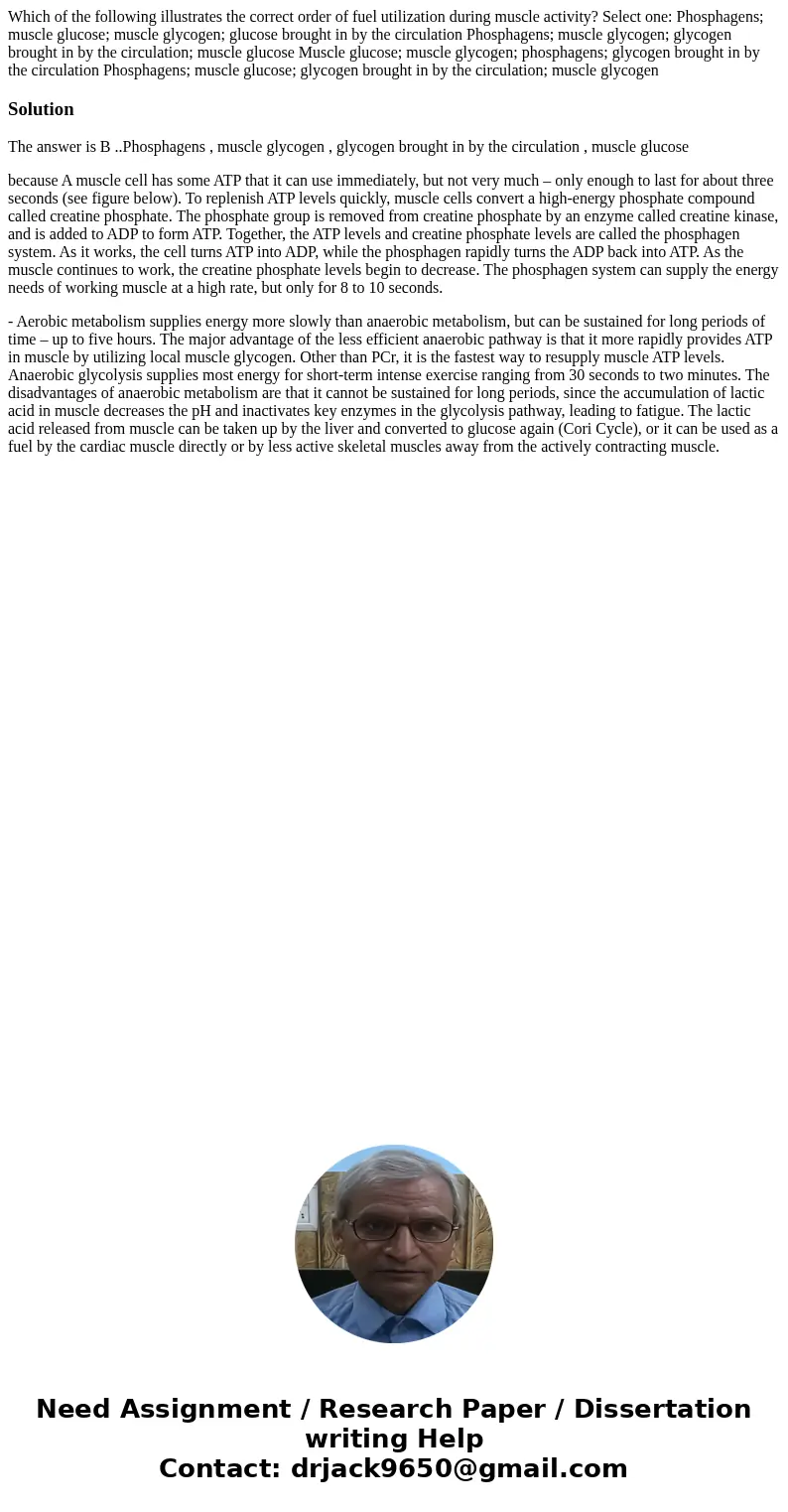Which of the following illustrates the correct order of fuel
Solution
The answer is B ..Phosphagens , muscle glycogen , glycogen brought in by the circulation , muscle glucose
because A muscle cell has some ATP that it can use immediately, but not very much – only enough to last for about three seconds (see figure below). To replenish ATP levels quickly, muscle cells convert a high-energy phosphate compound called creatine phosphate. The phosphate group is removed from creatine phosphate by an enzyme called creatine kinase, and is added to ADP to form ATP. Together, the ATP levels and creatine phosphate levels are called the phosphagen system. As it works, the cell turns ATP into ADP, while the phosphagen rapidly turns the ADP back into ATP. As the muscle continues to work, the creatine phosphate levels begin to decrease. The phosphagen system can supply the energy needs of working muscle at a high rate, but only for 8 to 10 seconds.
- Aerobic metabolism supplies energy more slowly than anaerobic metabolism, but can be sustained for long periods of time – up to five hours. The major advantage of the less efficient anaerobic pathway is that it more rapidly provides ATP in muscle by utilizing local muscle glycogen. Other than PCr, it is the fastest way to resupply muscle ATP levels. Anaerobic glycolysis supplies most energy for short-term intense exercise ranging from 30 seconds to two minutes. The disadvantages of anaerobic metabolism are that it cannot be sustained for long periods, since the accumulation of lactic acid in muscle decreases the pH and inactivates key enzymes in the glycolysis pathway, leading to fatigue. The lactic acid released from muscle can be taken up by the liver and converted to glucose again (Cori Cycle), or it can be used as a fuel by the cardiac muscle directly or by less active skeletal muscles away from the actively contracting muscle.

 Homework Sourse
Homework Sourse